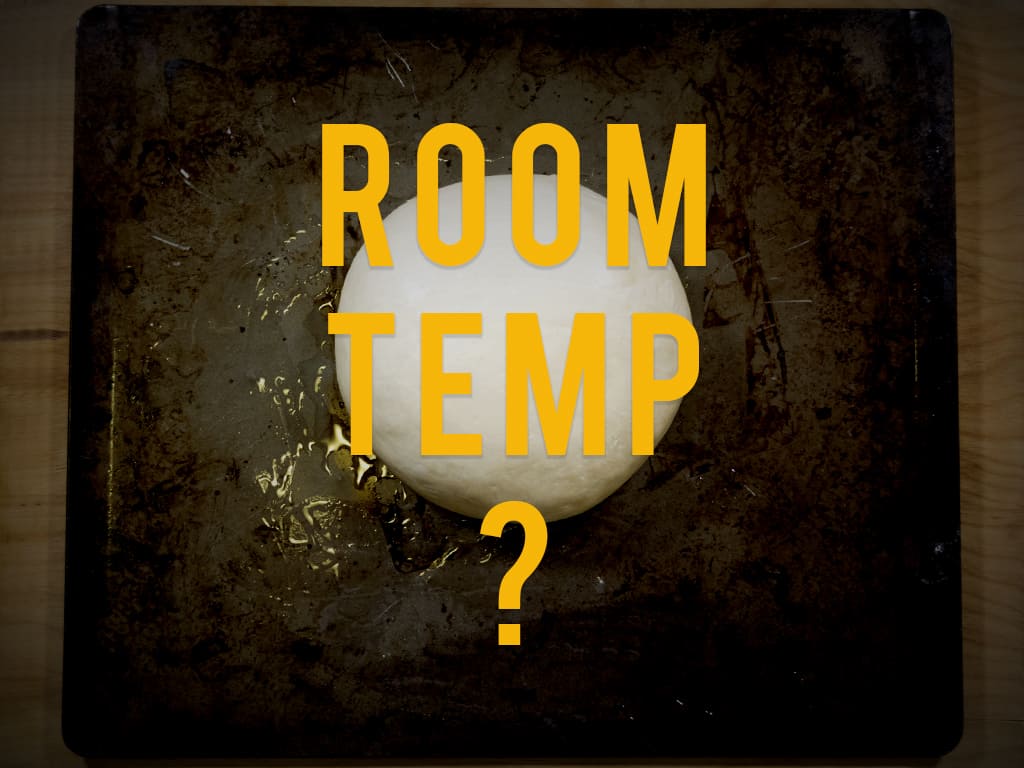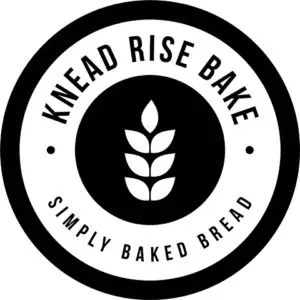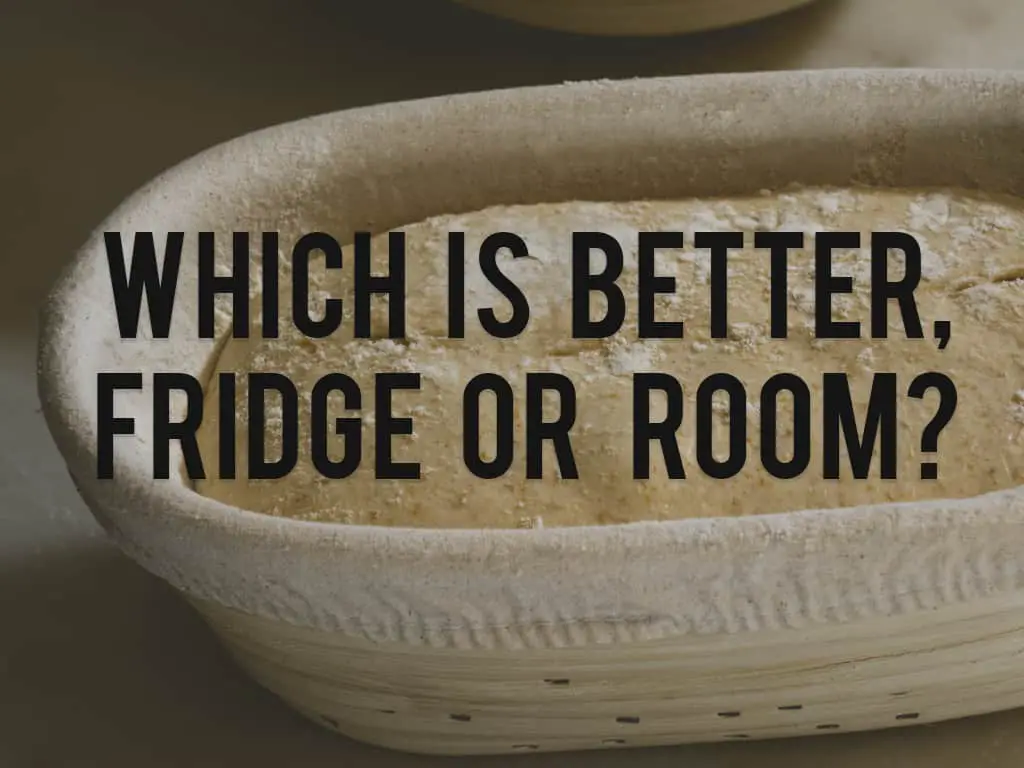Something I’m beginning to realize is how much flexibility there is in bread-baking. Take the proofing stage, for example. Some recipes call for bread dough to be proofed at room temperature, and others call for dough to proof in the refrigerator. We already discussed in an earlier blog post that dough can be proofed in the refrigerator.
So we started to wonder – which is better? To let dough rise at room temperature, or in the refrigerator? Proofing in the refrigerator is widely considered to be a superior proofing method that improves taste and structure. This is due to the slower rate at which yeast works when exposed to cold temperatures. The result is a longer and more stable rise, which extends the amount of time for flavor to develop. However, room temperature proofing is superior when speed is of top value.
In our experience, the benefits of cold proofing also depends on the type of bread you are making. With a basic loaf of sandwich bread, the longer colder rise will have little pay off. It will have better structure and flavor, but It’s just a sandwich loaf. It is typically a pretty hardy and mild flavored bread to begin with. You’d be better off building flavor with a bit of lunch meat and cheese. In fact, the main reason we prefer cold proofing for basic white breads is because it gives us more flexibility; the flavor and structure is just a bonus on top.
Benefits of Refrigerated Proofing
What exactly is better about bread that’s gone through a proof in the fridge? Let’s touch on those benefits mentioned above in just a little bit more detail.
- Improved Taste: because everything slows down and the yeast has a longer time to do its thing, that gives the dough more time to absorb flavor. Additionally, the flavor notes that are produced are actually said to be better due to the change in carbon production and acid production. In short, more of those bready-flavors we all love so much.
- Improved Structure: to be honest, I’m not sure if this is due to differences in the actual gluten production or just because cold dough is firmer than room-temperature dough. Regardless, the fact is that dough proofed in the fridge is firmer, and therefore easier to work with. It also holds its shape better when being transferred to a baking vessel.
- More Flexibility: Unlike room-temperature dough, which usually has about a 10-minute window of optimal proof time, fridge-proofed dough has a longer window between “perfectly proofed” and “over-proofed”. This means you get to fit bread-baking into your schedule. You don’t have to babysit your dough all day.
The Trade-Off
Like many things in life, all this goodness doesn’t come without a cost. Like I said above, bread dough that is proofed in the fridge is superior because the rising process is slowed down. But that comes at the price of – you guessed it – a longer proofing time. How much longer? In our experience, up to 12 hours, compared to a 1-hour room-temperature proof time. Cook’s Illustrated also tested the results of proofing bread dough at different temperatures, and while they much preferred the results of the cold fridge proof, this came at the cost of an almost 24-hour proof time (compared to the 2 ½ hour proof time of their room temperature dough).
The reality is, it’s hard for most of us to plan that far ahead for a loaf of bread. This is why so many bread recipes do call for dough to proof at room temperature. The process is much faster, and you’ll still get a perfectly delicious loaf of bread. 75°- 80° Fahrenheit is actually the ideal temperature to get the best flavor and structure with quicker rise times. You could go warmer and get faster rise times, but with negative structure and flavor side effects.
Our Home Test of Cool vs Warm Proofing
After reading all this hype about the benefits of a colder proof, we just couldn’t help testing it out for ourselves. We decided to do a test of two different proofs from the same dough. We used King Arthur Flour’s recipe for classic sandwich bread. We made one large batch of dough and allowed its first rise to take place in room temperatures. Then we divided the dough into two equal portions, shaped both into boules, and put them on sheet trays. We left one out on the counter, in our 72° kitchen, and put the other in the fridge.
What did we find?
First, the dough in the fridge took much longer to proof – 12 hours, compared to the 1 hour proof time of the room-temperature dough!
Second, the dough that was fridge-proofed was absolutely easier to work with. When we went to transfer the room-temp dough from the sheet tray to a dutch oven for baking, the dough was floppy. It instantly started to deflate. It should be noted here that Chris was a little less than gentle in the transport. The fridge-proofed dough, on the other hand, kept its shape and inflation much better.
Third, we noticed the difference in taste. Once both doughs were baked, we tasted them both. The loaf from room-temp dough didn’t have much flavor. It basically just tasted like white bread. Which is what it is supposed to be. However, the loaf from fridge-proofed dough had a better rise (because it didn’t deflate like the room temp dough did), and also had more flavor. It wasn’t a huge difference; we’re not talking about La Brea vs. Wonderbread, here. But you could definitely taste the improvement from the long, slow rise in the fridge.
Is it worth the wait?
If you are in a rush and need bread now, go ahead and proof your dough at room temperature. The bread will be ready in a fraction of the time and, at the end of the day, you’ll still have fresh-baked bread! But if you can plan ahead and proof your dough in the fridge, go for it! For the cost of a longer waiting time, you’ll have a better loaf of bread as a reward for your patience.
But we’d argue it doesn’t have to be a test of patience. We’re finding that the longer proof, as strange as it might seem, makes the process easier and less time intensive. This is because it allows us to stretch the time to make bread out into smaller chunks of time. For our schedule it is hard to get a 3 hour block of time to work on bread, but we can find 20 minutes at a time, a handful of times throughout the day.
Flexible Sample Schedule
Based on our experiment, here is a sample schedule that you can use for fridge-proofed dough:
Mix at 7:00 PM: Follow your recipe of choice
First Rise at 8:00 – 9:00 PM: Depending on the recipe, the dough should take one to two hours to complete its first rise
Shape: When the dough has finished its first rise, shape according to recipe directions.
Proof: After shaped, cover dough and place in fridge overnight.
Bake at 8:00 AM: In the morning, bake the loaf. There’s no need to bring the dough to room temperature, but you may need to add a couple of minutes to the baking time.
Related questions
What is the best temperature for dough to rise?
Understandably, some may not be satisfied with the vague terms, “room temp” and “cold” or “refrigerated”. They may be thinking, just give me specifics! What is the exact best temperature for proofing bread? Unfortunately, there is no definite answer to this. That’s because it depends on a lot of things; the amount of yeast in the recipe, the type of dough, the goal of the baker (i.e. to have the tastiest bread possible vs. to have bread as quickly as possible). Check out our blog post about room temperature for more on all of the above: https://kneadrisebake.com/what-is-room-temperature-anyway/.

The rule of thumb for most recipes is a room-temperature rise; it achieves a lot of flavor in a relatively short amount of time. In fact, Weekend Bakery did the math and reports that, for the best speed-to-flavor ratio, 80° is the optimal temperature.
But as we noted above, if you’re going for the best flavor and texture possible, the fridge proof reigns supreme. If you want more proof (ha, get it?) beyond our experiment, you can read about Cook’s Illustrated’s test with warm, room temperature, and cold proofs.
How hot is too hot for bread to rise?
According to the Bob’s Red Mill blog, 120° is when yeast starts to die off. This is true of both dried and fresh yeast. By 140°, all the yeast has been killed off.
As long as your dough is kept cooler than 120°, the yeast will be OK. But keep in mind, warmer temperatures = more active yeast = faster rise = inferior bread. So while you should be OK proofing bread at 80° – 90°, temperatures much higher than that may result in a denser, less flavorful loaf.

